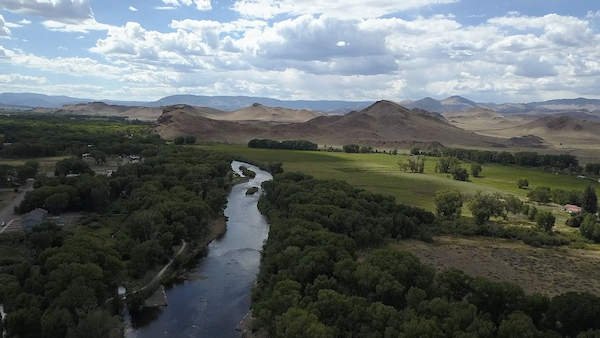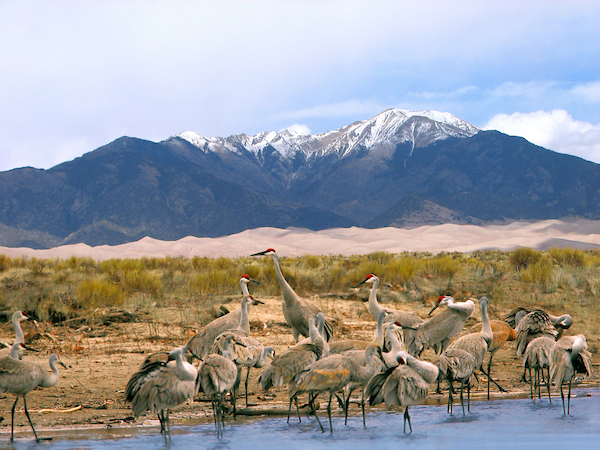How Clean Is The Ditch Water In St Charles Mesa Pueblo
Across the southwest, h2o is an essential, often deficient resource that communities rely on for their ways of life. In south-key Colorado, the Rio Grande, its tributaries and the water flowing underground supports communities beyond the San Luis Valley, an eight,000 foursquare-mile high height desert that sees less than seven inches of precipitation per year. H2o ties generations of people and communities together across the Valley. Married by shared ethics of caring for land and h2o, everyone beyond the San Luis Valley depends deeply on the Rio Grande – for their livelihoods, the rich variety of wildlife and outdoor activities, and a deep connection to the rich history of people who accept come before them.

To assist tell the story of the San Luis Valley, the interdependent nature of the people, the river and water flowing beneath their anxiety and the threats facing the Valley'due south way of life, American Rivers developed Groundswell on the Rio Grande, an interactive ESRI Story Map that illustrates the connexion between people, communities and water.
Learn more virtually the San Luis Valley, visit Groundswell on the Rio Grande
In developing the Story Map, nosotros had the pleasance of engaging with a wide cross-department of people that rely on and appreciate the Valley's waters for different reasons. Whether we talked to a rancher, pocket-sized business owner, recreation advocate, retired double-decker driver, brewer or water director, it was clear how important the Valley, and the Valley's h2o is to them. Water undeniably touches everyone in the Valley, but it is the threats to the rivers and aquifers that bring communities together to fight for their water.
Let's Stay In Impact
The San Luis Valley is facing a real threat from Renewable Water Resource (RWR), a proposal to export groundwater out of the San Luis Valley to Colorado's southern Forepart Range. In belatedly 2022, RWR approached the Douglas Canton Commission, asking for $20 one thousand thousand of federal rescue program funds to pipe h2o out of the San Luis Valley to the Denver suburbs.
As the Story Map describes, h2o flowing through and beneath the Valley is essential for communities, agriculture, recreation and the surroundings. The inextricable link between groundwater and surface water in the Valley ways that the RWR proposal would take direct, negative impacts for everything from agronomical communities and culture to fish, wildlife, and a growing recreation economy, specifically at Corking Sand Dunes National Park. Douglas County Commissioners are currently considering the proposal from RWR as they grapple with a growing population within their communities. Notwithstanding, at that place are other options – such equally water conservation, efficiency and reuse – that are lower in toll and create local jobs that the Canton should consider instead. Join us in urging the Douglas County Commissioners to reject RWR's proposal to pipe h2o from the San Luis Valley to the Forepart Range. Click here for petition

As you view the Story Map we hope you lot proceeds a better understanding of why protecting and preserving the wellness of the Rio Grande, the viability of aquifers, and the deep history of the San Luis Valley is as critical for communities that rely directly on the river as it is for the state of Colorado and the Southwest. Brand your vocalisation heard and speak up for the San Luis Valley, and the rivers and waters that period through and underneath such an incredible part of Colorado.
Source: https://www.americanrivers.org/2022/02/groundswell-on-the-rio-grande-how-people-of-the-san-luis-valley-are-coming-together-around-water/
Posted by: makrisformaded.blogspot.com


0 Response to "How Clean Is The Ditch Water In St Charles Mesa Pueblo"
Post a Comment